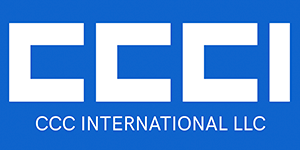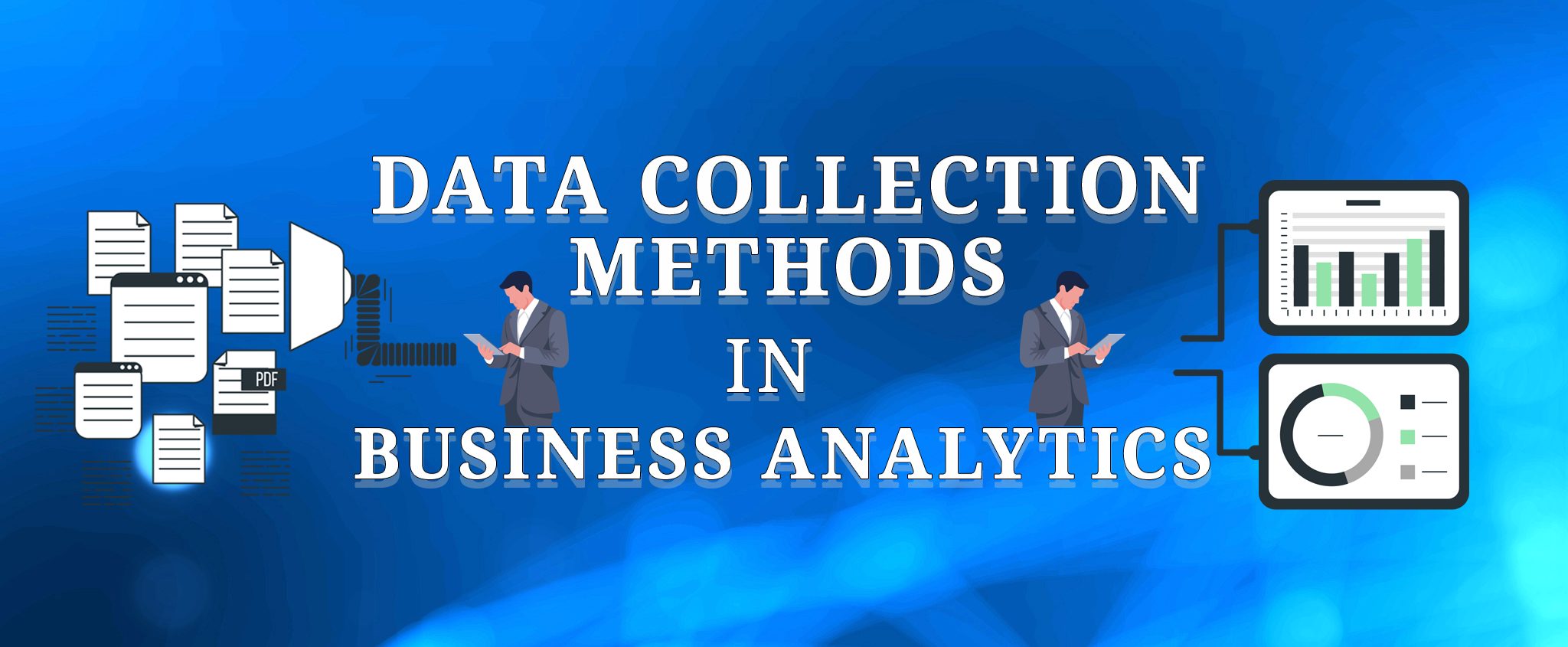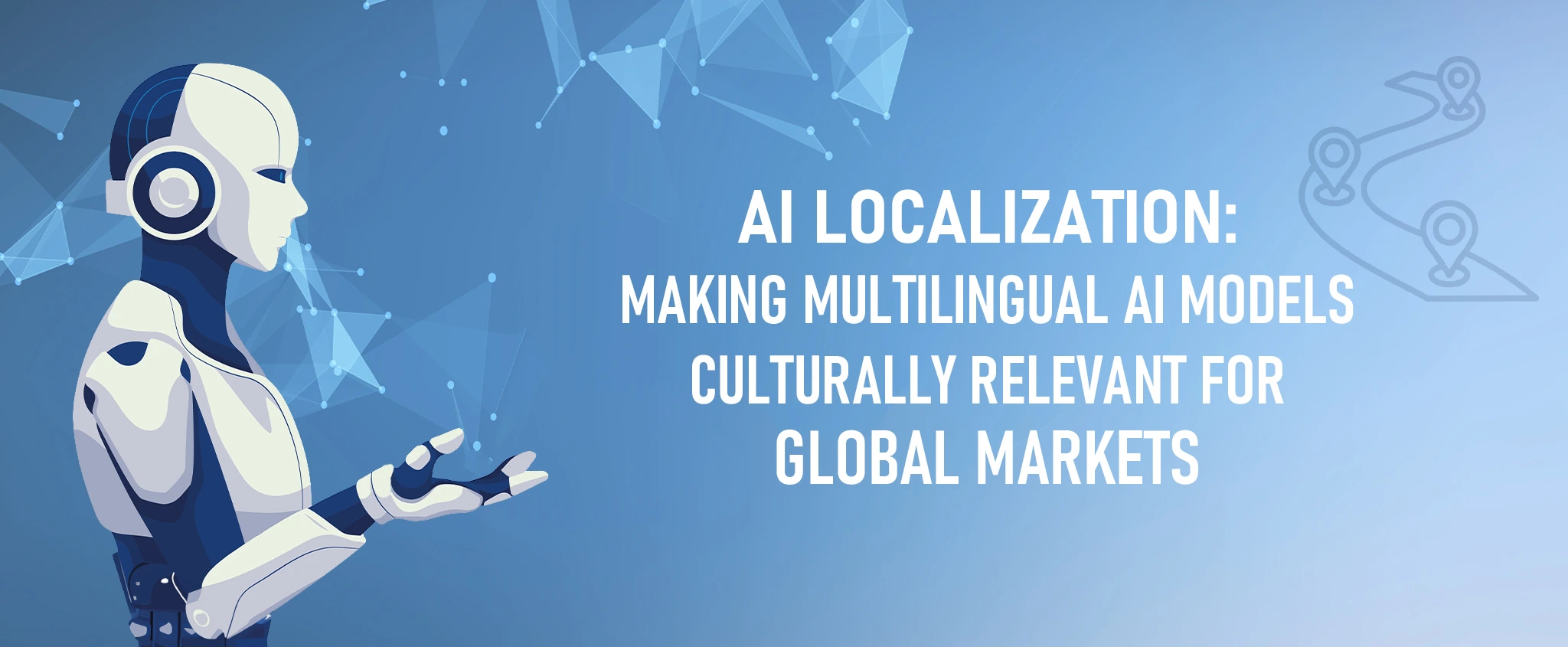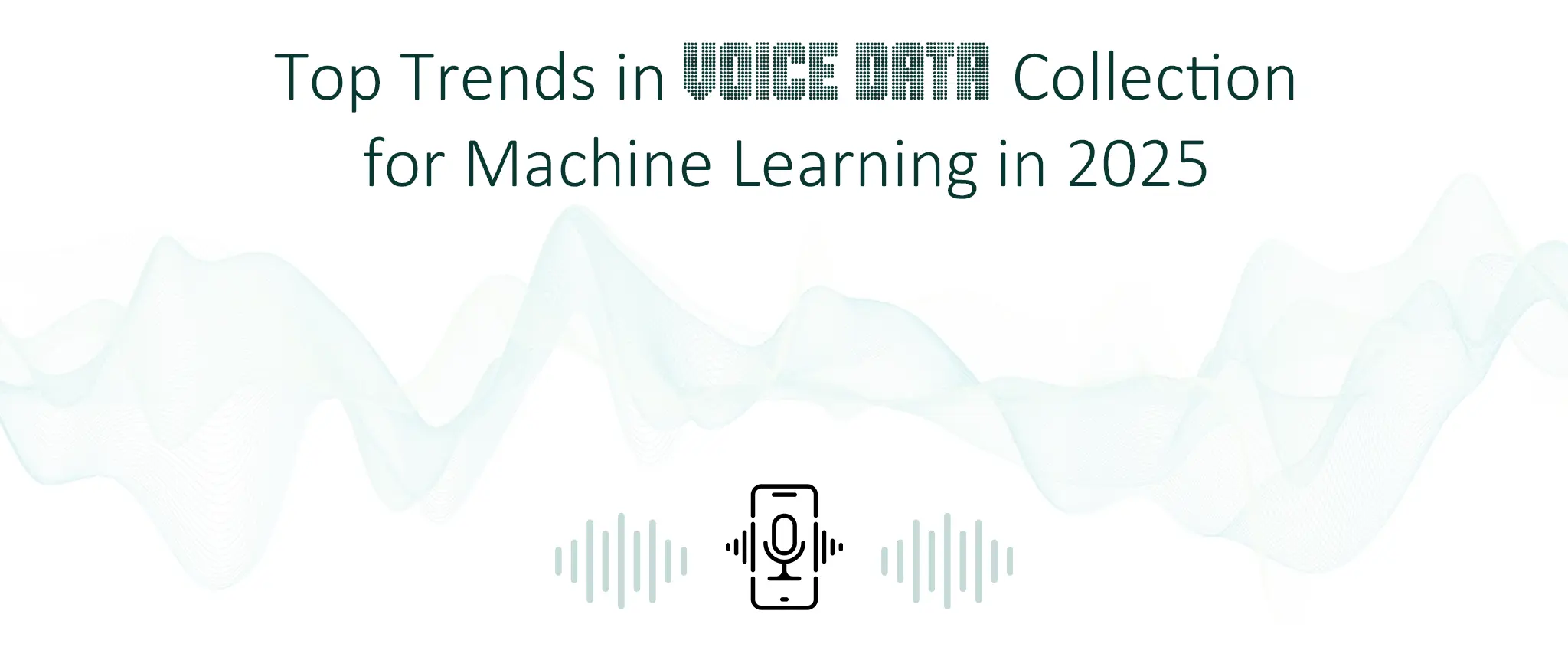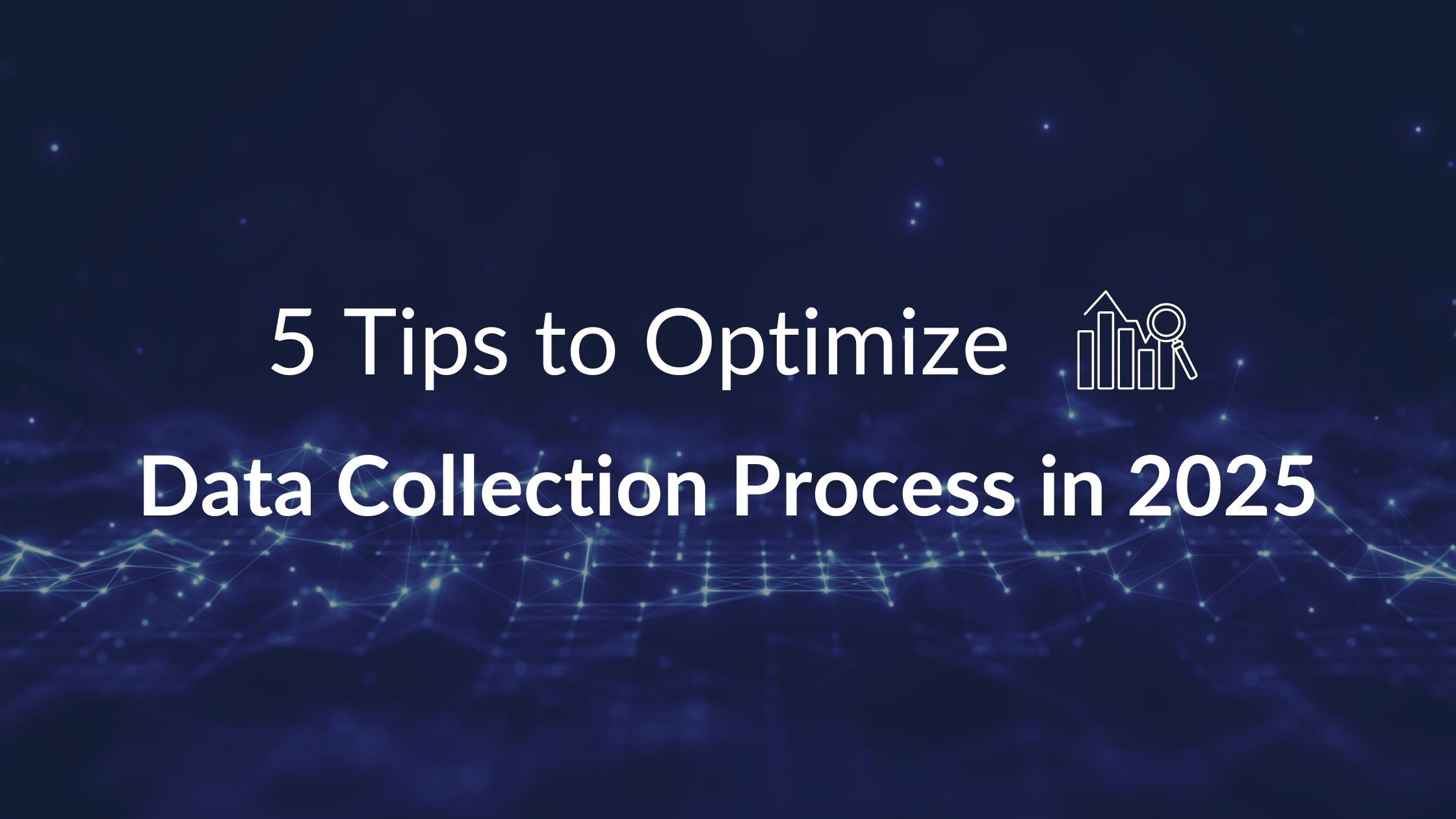Data Collection Methods in Business Analytics
Key takeaways
- Various data collection methods are used in business analytics, each with its advantages and disadvantages.
- The type of data and the business goals will determine which data gathering procedure is most appropriate.
- There are two main data collection types: qualitative and quantitative.
- Qualitative and quantitative data collection methods are both vital and complementary.
- Qualitative data collection is used to gain an in-depth understanding of a topic. Quantitative data is for collecting large amounts of data from a large group of people.
- Online data collection methods are becoming increasingly popular due to the ease of access and the ability to reach a large audience.
Table of contents:
- What is Data Collection?
- Methods of Collecting Data
- Quantitative vs Qualitative Data Collection
- Data Collection Methods Used in Business Analytics
- CCCI – Professional Data Collection Services
Businesses thrive off of data. Without reliable data, informed decision-making is difficult, if not impossible. To make the most impactful decisions, analysts need access to high-quality data that has been collected ethically and efficiently. Data collection methods vary depending on the data being collected, the resources available, and the business goals.
According to InData Labs, companies can improve customer services with big data. And eventually, this helps increase profit, improve target marketing, reduce costs, and improve processes. That is how critical data is to business analytics and decision-making.
The type of data and the method used to collect it will vary depending on the business problem you are addressing. This article will discuss some primary data collection methods used in business analytics.
What is Data Collection?
Data collection is gathering and measuring information on targeted variables in an established system, which then enables one to answer relevant questions and evaluate outcomes.
Data collection is a part of nearly every research project. You can do it in many different ways, and the best method to use often depends on the type of data you are collecting. And speaking of the type of data, generally, there are three types of consumer data:
- First-party data. Collected directly from users by your organization.
- Second-party data. Data shared by another organization about their customers.
- Third-party data. Aggregated and rented or sold data by organizations.
Methods of Collecting Data
So how can you collect data for your business? We have listed the top six methods of data collection in statistics:
Interviews
Interviews are a common method of collecting data. They involve asking people questions to gather information about their opinions, experiences, or beliefs. You can conduct interviews in person, over the phone, or via video conferencing.
Questionnaires and Surveys
Surveys and questionnaires are often used to collect large amounts of data from many people in a short time. Surveys can be administered online, over the phone, or in person.
Observations
Observational data is collected by observing people or events as they occur. This type of data can help study things that are difficult to measure, such as behavior or interactions.
Focus Groups
A focus group is a type of interview involving a small group of people you ask about their opinions on a particular topic. Focus groups are often used to gather data about consumer behavior or perceptions.
Secondary Data
Secondary data is data that has already been collected by someone else and is available for you to use. You can find this data type in reports, studies, or articles. It can help get an overview of a topic or find trends.
Oral Histories
Oral histories are stories that people tell about their personal experiences. They can be recorded and used as a method of data collection. This makes audio and video data methods of collecting data as well. It is recording audio or video footage of people, events, or interactions, eventually needing speech recognition and transcription.
Quantitative vs Qualitative Data Collection
The data collection methods in research can be divided into two main categories: qualitative and quantitative.
Qualitative data is descriptive in nature and deals with non-numerical information. This data type is used to understand concepts, feelings, or points of view. It allows analysts to get at the heart of an issue and understand its behavior or motivations. Qualitative data is typically collected through interviews, focus groups, or observations.
Quantitative data is numeric in nature and deals with facts and figures. This type of data tests hypotheses and measures outcomes. Quantitative data is typically collected through surveys, questionnaires, or experiments.
The Advantages and Disadvantages of Data Collection Methods
Each data collection method has its advantages and disadvantages. On the one hand, some benefits of qualitative data include:
- Allowing for in-depth, rich descriptions
- Providing context and background information
- Helping to generate new ideas or hypotheses
- Allowing for flexibility and changes to be made during the data collection process
However, qualitative data collection can be time-consuming and costly. Data can also be challenging to analyze, and there is limited generalizability. On the other hand, some advantages of quantitative data include:
- Easier to analyze and compare
- More reliable and objective
- Can be generalized to a larger population
But data can be difficult to interpret. They can also be rigid and do not allow changes during data collection.
Pro Tip
Pro Tip
Use a mix of qualitative and quantitative data to get the most accurate and complete picture.
Data Collection Methods Used in Business Analytics
The only way to know which data gathering procedure you should use is to understand the business problem you’re trying to solve. What does your business need to know? How will the data be used? What type of data do you need?
Once you’ve answered these questions, you can choose the best method (or combination of methods) to collect the data. With that said, here are some standard methods used in business analytics:
Customer Surveys
Surveys can be administered online, over the phone, or in person. Through customer surveys, you can collect data about customer satisfaction, product or service quality, and customer loyalty. When you know what your customers think, you can make changes to improve your business.
Focus Groups
Focus groups collect data about consumer behavior or perceptions. Like customer surveys, focus groups can help you understand your customers and better your business.
Website Analytics
You can use website analytics tools like Google Analytics to collect data about website traffic and user behavior. Your website analytics can tell how people find your website, what they’re doing on your website, and where they’re coming from. This data can improve your website design, content, and user experience.
Customer Support Monitoring
Customer support data can be collected from customer service records, help desk software, or social media. You can collect data about your customers, brand, and industry through social media. You can use this data to track customer sentiment, understand what people are saying about your brand, or measure the success of your marketing campaigns.
Note: Collecting data online has become increasingly popular as businesses try to reach a larger audience. Social media has made it easier for companies to connect with customers and collect data about them!
Audio and Speech Data Collection
Audio and speech data collection is the process of recording, storing, and analyzing audio signals to extract information. Use it in various applications, including speech recognition, sound analysis, and communication systems.
There are several ways to collect audio and speech data, including manual transcription, automatic speech recognition, and telephone surveys. Manual transcription is the process of transcribing audio signals by hand. This is a time-consuming process, but it’s accurate and can be used to collect data from any audio signal.
Automatic speech recognition (ASR) is an audio and speech data collection method that uses algorithms to transcribe audio signals automatically. ASR is faster than manual transcription, but it’s not as accurate.
Pro Tip
Pro Tip
Collecting sales, product usage, and financial data is also helpful. When you know what products or services are selling well (and which aren’t), you can decide what to stock, how to price items, and where to focus your marketing efforts.
Data collection can do wonders for your business. It can help you track progress, make decisions, and improve your bottom line. But what if you don’t have the time or resources to collect the data yourself? That’s where CCCI comes in!
CCCI – Professional Data Collection Services
There are many data collection types and methods, as you’ve seen. But don’t worry; you don’t have to do it all yourself! CCCI has a team of experienced data collectors that can help you with any data collection, from customer surveys to financial reports. We’ll work with you to understand your needs and design a customized data gathering procedure that fits your budget.
We understand the qualitative and quantitative data collection methods, so you don’t have to. Well, it would be best if you did, but you can use your time doing what you do best for your business instead. There are several data collection tools and techniques, and we know how to use the best of the best.
Our data collection services highlight the role of audio and speech data in AI voice recognition. Our Speech to Text Transcription and Multimedia Data Annotation services are the best in the industry. Let us help you collect the data you need to take your business to the next level. Contact us today!
